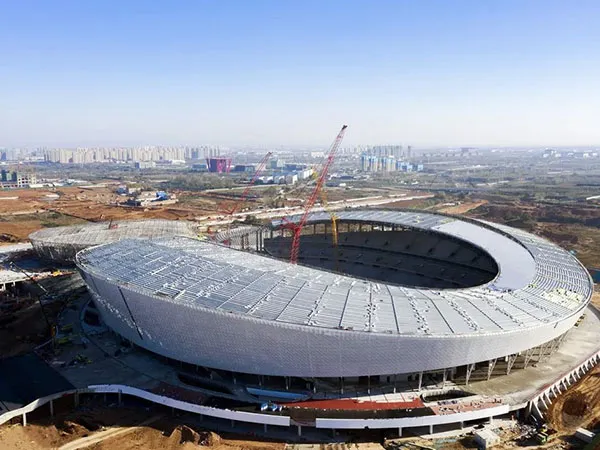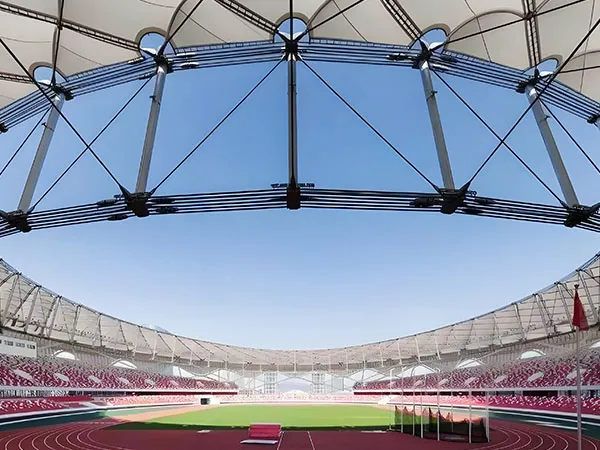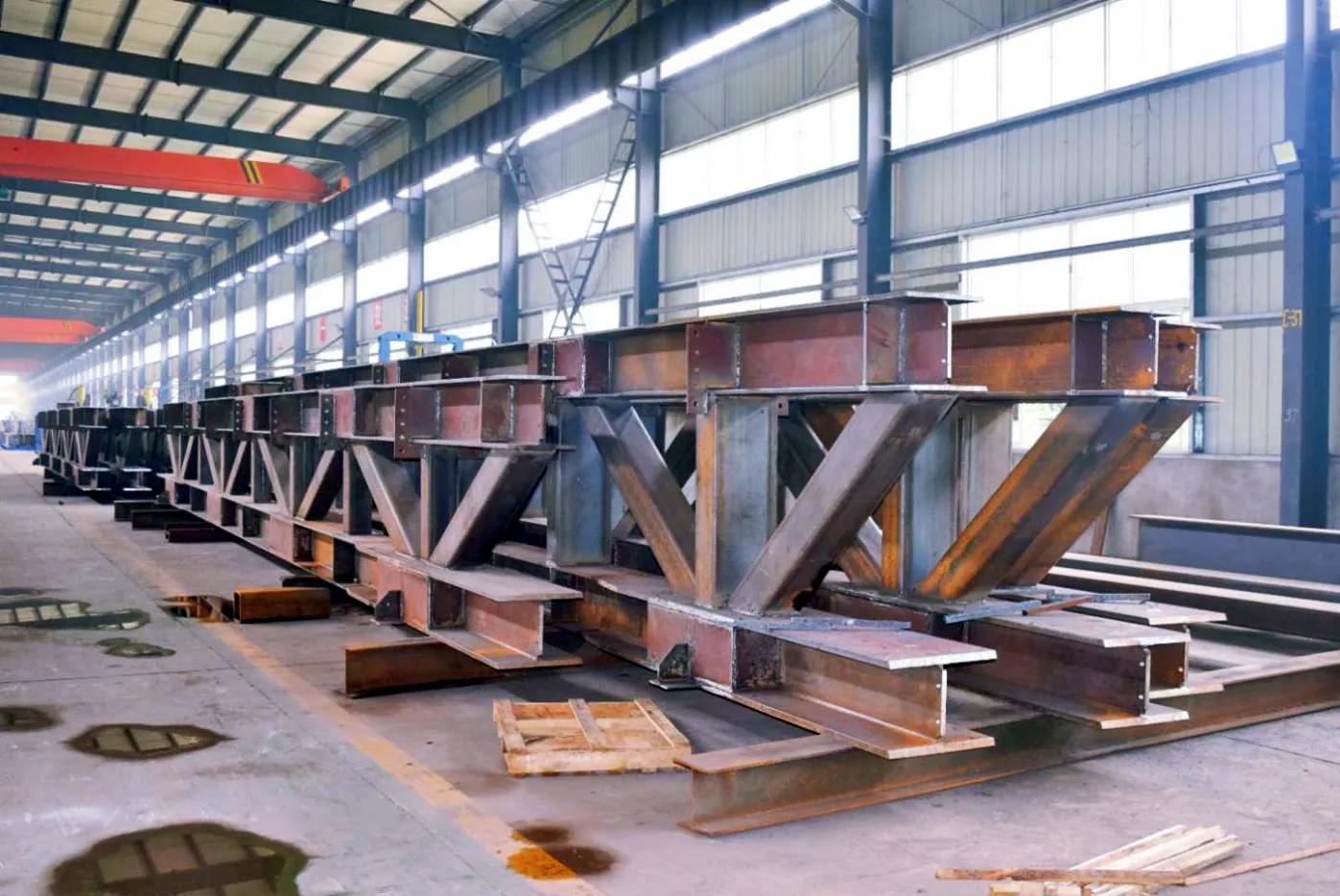Time:2025-04-23 08:27:33 Source:Sanjian Meichen Steel Structure
Repairing weld cracks in steel structures is a critical task that requires careful planning, execution, and inspection to ensure the structural integrity is restored and the crack doesn't return. This is a job for critical structures and should ALWAYS be performed by qualified welders following approved procedures under the supervision of experienced engineers or inspectors.

Safety First: Implement all necessary safety precautions. This includes proper PPE (welding mask, gloves, leathers, respirator if needed), fire watch, ventilation, hot work permits, lockout/tagout procedures if near machinery, and securing the area.
Identify the Crack: Locate the crack precisely. Determine its full extent (length, depth, and whether it extends through the thickness). Non-Destructive Testing (NDT) methods like Magnetic Particle Testing (MT), Liquid Penetrant Testing (PT), or Ultrasonic Testing (UT) are often essential to find the crack tips accurately.
Determine the Cause (Crucial!): This is the MOST important step to prevent recurrence. Why did the crack form?
Fatigue: Cyclic loading leading to crack initiation and propagation.
High Residual Stress: From the original welding or fabrication process.
Hydrogen Embrittlement: Hydrogen trapped in the weld/Heat Affected Zone (HAZ). Often causes delayed cracking (hours or days after welding).
Poor Weld Quality: Lack of fusion, lack of penetration, porosity, slag inclusions acting as stress risers.
Incorrect Weld Procedure: Wrong consumables, incorrect preheat/interpass temperature, wrong parameters.
Poor Joint Design: Creates stress concentrations.
Overload: The structure was subjected to loads beyond its design capacity.
Base Metal Defects: Laminations or inclusions in the steel itself.
Consult Codes and Standards: Refer to relevant welding codes (e.g., AWS D1.1 Structural Welding Code – Steel, Eurocode 3, etc.) and project specifications for requirements regarding crack repair.
Develop a Repair Procedure: Based on the cause, material type, thickness, location, and code requirements, a detailed Welding Procedure Specification (WPS) for the repair must be developed or selected. This specifies:
Method of crack removal.
Joint preparation details.
Welding process (SMAW, FCAW, GMAW, SAW).
Filler metal type and size.
Preheat requirements.
Interpass temperature control.
Post-Weld Heat Treatment (PWHT) if required.
NDT requirements before, during, and after repair.
Qualified Personnel: Ensure the welders performing the repair are qualified according to the specific WPS and relevant codes. Ensure qualified NDT technicians and inspectors are involved.

Crack Removal: The entire crack, including its tips, must be completely removed. This is typically done by:
Gouging: Air Carbon Arc Gouging (CAC-A) is common and efficient but requires care not to introduce excessive carbon into the base metal (usually followed by grinding). Plasma Arc Gouging (PAG) is another option.
Grinding: Using abrasive wheels. More controlled but slower, suitable for smaller cracks or finishing after gouging.
(Optional) Stop Drilling: Sometimes, small holes are drilled at the very tips of the crack before gouging to help relieve stress and prevent further propagation during removal. However, the primary method is complete excavation.
Verify Crack Removal: After excavation, perform NDT (usually MT or PT) on the gouged/ground area to confirm 100% of the crack has been removed. If any indication remains, continue removal and re-inspect.
Prepare the Joint: Shape the excavated area into a suitable weld groove (e.g., V-groove, U-groove) as specified in the WPS. Ensure smooth transitions and clean surfaces. Clean the area thoroughly (typically grinding) to bright metal, removing all oxides, slag, oil, grease, and moisture for several inches around the repair zone.
Preheat (If Required): Apply preheat to the specified temperature (from the WPS) using torches or induction heating. Measure the temperature correctly (temp sticks, pyrometers) on the surface adjacent to the weld area. Maintain preheat throughout the welding process. Preheating slows the cooling rate, reducing hardness and the risk of hydrogen cracking.
Welding:
Use the welding process, parameters (amps, volts, travel speed), and consumables specified in the qualified WPS.
Use low-hydrogen practices if required (especially for thicker sections or higher strength steels), including proper storage and handling of low-hydrogen electrodes/wires.
Employ proper welding techniques. Consider using techniques like back-step welding or controlled deposition sequences to manage heat input and minimize residual stress.
Clean thoroughly between weld passes (remove all slag).
Maintain the minimum specified interpass temperature. Do not let the weld cool down below the minimum preheat/interpass temperature between passes unless allowed by the WPS (which is uncommon during the main fill passes).
Post-Weld Treatment (If Required):
Controlled Cooling: Allow the weld to cool slowly. Sometimes thermal blankets are used.
Peening: May sometimes be specified (carefully controlled) to introduce beneficial compressive stresses, but must be part of the approved procedure.
Post-Weld Heat Treatment (PWHT): If required by the code or WPS (often for thicker sections, certain steel grades, or service conditions), heat the entire weld area or component to a specific temperature for a set duration and cool it under controlled conditions to relieve residual stresses and temper the microstructure.

Visual Inspection (VT): After cooling, perform a thorough visual inspection of the completed weld for defects like undercut, overlap, surface porosity, cracks, and proper profile.
Non-Destructive Testing (NDT): Perform the NDT methods specified in the WPS or code (often MT, PT, UT, or sometimes RT) after the weld has cooled (and after PWHT, if applicable). This verifies the internal and surface integrity of the repair weld. Acceptance criteria will be defined by the governing code/specification.
Grinding/Finishing: If required for structural or aesthetic reasons, grind the weld smooth or to the specified contour.
Protective Coating: Re-apply paint or other protective coatings as needed to match the surrounding structure and prevent corrosion.
Maintain detailed records of the entire repair process:
Location and description of the original crack.
NDT reports (before, during, after removal, after welding).
Cause analysis findings.
Repair WPS used.
Welder identification/qualifications.
Consumable types and batch numbers.
Preheat and interpass temperatures recorded.
PWHT charts (if applicable).
Final inspection reports and sign-offs.
Root Cause: Simply welding over a crack or not removing it fully guarantees it will return, often worse than before. Addressing the root cause (design modification, load reduction, improved weld procedure) is paramount.
Material: Different steel types require different procedures (e.g., high-strength steels are more sensitive to hydrogen cracking and require careful preheat/consumable control).
Constraints: Welding on an existing structure often involves higher restraint than welding during initial fabrication, increasing residual stress and the risk of cracking if not managed properly.
Repairing weld cracks is a complex engineering task. Always prioritize safety, adhere to established codes and procedures, and utilize qualified personnel.